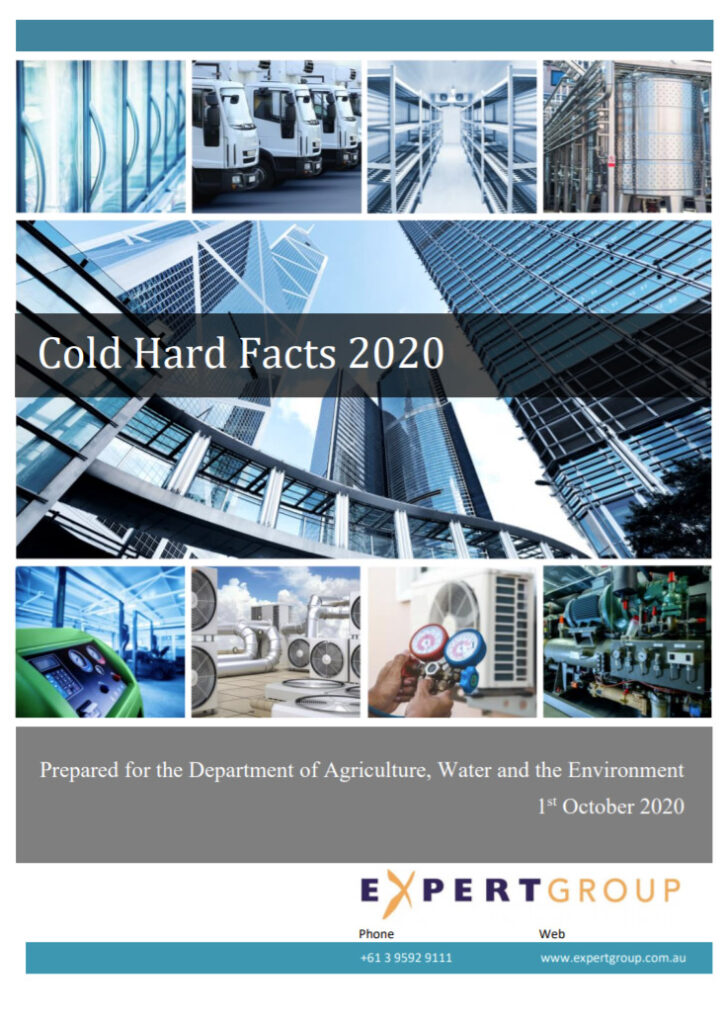HFO still on the go-slow in Australia
- PostedPublished 10 December 2020

Latest Cold Hard Facts report shows slowly increasing OEM uptake of R1234yf in Australia
THE latest Cold Hard Facts report into Australia’s air-conditioning and refrigeration industry reveals that R1234yf is finally gaining a foothold in the local automotive market.
In other industry sectors, lower global warming potential (GWP) refrigerants including those based on or blended with the hydrofluoroolefin (HFO) technology that underpins R1234yf are being adopted both on a wider scale and in systems with higher charge capacities.
For example, HFO/HFC blend usage rose from 13 tonnes in 2018 to 38 tonnes in 2019.
They still have some way to go until they supersede usage of high-GWP refrigerants such as R134a, of which 1456 tonnes were deployed in the same year.
With widespread adoption of R1234yf by automotive manufacturers in major markets such as Europe, North America and Japan, Cold Hard Facts points out that Australia remains slow to follow suit.
“There is some evidence that R1234yf is starting to make a contribution to the transition away from R134a in the automotive mobile air conditioning (MAC) bank,” states the report.
“However, change is still slow with an estimate of less than five per cent of the 945,000 new vehicles imported into Australia in 2019 containing HFOs.”
According to the report, these included cars from BMW, Honda, Nissan, Suzuki and Renault.
In other markets, the majority of new vehicles are charged with R1234yf, so the transition is well underway.
Yet it remains clear that where they can get away with it, as is the case in Australia, the vast majority of manufacturers are still choosing to charge car air-conditioning systems with R134a.

Larger systems, such as transport refrigeration and buses, are also starting to show signs of potentially shifting away from HFCs to HFO and HFO/HFC blends.
The increasing adoption of more environmentally friendly refrigerants has contributed to a slower growth rate of Australia’s bank of regulated refrigerants.
In 2006-2016, the metric tonnes of refrigerant used rose by 4.3 per cent; in 2016-2019, that rise was just 1.8 per cent. This drop is attributed to factors including a softening economy, reducing equipment sales, and more efficient hardware that requires a smaller refrigerant charge.
As a result of this local trend, against a backdrop of the ongoing global HFC phase-down, Cold Hard Facts asserts that the carbon dioxide equivalent of Australia’s refrigerant bank has likely reached its peak.
Cold Hard Facts is published on behalf of the Australian Government’s Department of Agriculture, Water and the Environment.
Each edition of the report catalogues figures, trends and developments in the compression refrigeration and heat exchanger market.
Its economical and technological assessments of the “cooling economy” are then used to steer ongoing regulatory developments and processes, such as the management and phase down of ozone-depleting substances.
According to the latest report, more than $A41 billion was spent on the compression refrigeration and heat exchanger market in Australia last year.
This figure, which includes money spent on hardware, employment, consumables and energy, accounts for 2.1 per cent of the country’s gross domestic product.
- CategoriesIn SightGlass
- TagsCold Hard Facts, R1234yf, refrigerant, refrigerants, SightGlass News Issue 22

